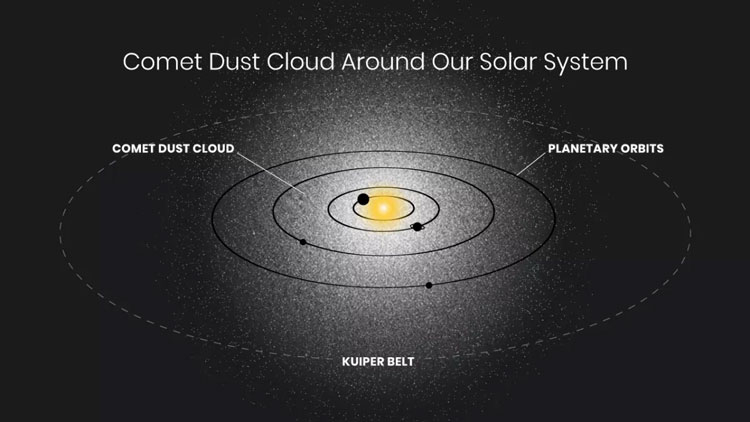Detailed analysis of over 200,000 archive images from the Hubble telescope shownthat in the belt of planets of our system there is a background glow of unknown origin. The “ghost glow” region extends up to 5 billion km from the Sun. It is like turning off the light in the room and the walls, floor and ceiling would still glow. Scientists still do not have a rigorous explanation for this phenomenon. One of them is “dusty” comets.
Image source: NASA, ESA, Andi James (STScI)
The incredible sensitivity of the Hubble Space Observatory to the visible spectrum makes it possible to capture very faint photons. Until now, astronomers have filtered out any background sources of photons in an effort to glean more information about the observed objects. But some of them wondered: what if stars, comets, planets and other light scattered by small and large asteroids in the solar system were ejected from the Hubble images? Thus was born the SKYSURF program to evaluate the background glow in our system.
The analysis helped find that up to a sphere with a radius of about 4.8 billion km, the sky itself glows uniformly with an intensity roughly equal to the intensity of the glow of ten fireflies in total. Thus, in the solar system there is a certain structure that radiates, but rather scatters, sunlight. And we are talking about the structure, since this object or cloud glows evenly in all directions.
It can be assumed that the glow of interplanetary space within the system causes comets to break up into dust and gas. But in this regard, another discovery was made. NASA’s New Horizons probe measured the background glow in our system well beyond the planets and asteroid belt, i.e. at a distance between 6.4 and 8 billion km from the Sun and also detected a faint glow background, the nature of which scientists have not yet can prove.
So far, astronomers agree that the nature of the inner and outer background glow may differ. How things really stand remains to be seen. The SKYSURF program has only outlined the problem, which will have to be solved with new experiments.
If you notice an error, select it with the mouse and press CTRL + ENTER.


